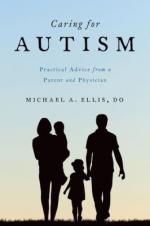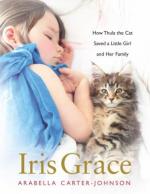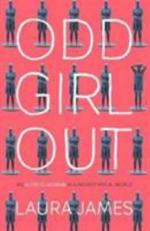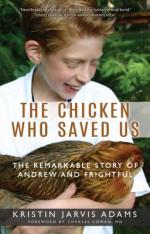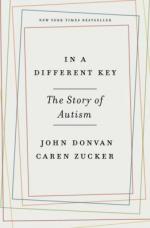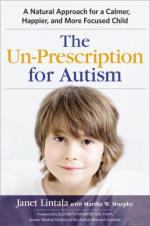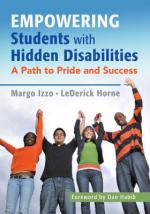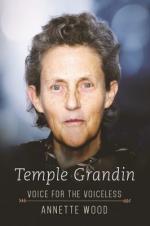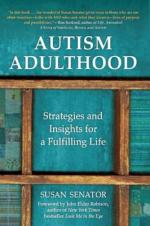April 1, 2018 | sobczakd
Do you want to know what it's like to live with autism spectrum disorder (ASD) as a part of your daily family life? Or how you can you help yourself, your child with ASD, and the rest of your family to thrive while handling this multifaceted disorder? As the title suggests, this book is filled with practical advice from not only a physician trained in ASD but one who has a child with ASD at home. Ellis knows firsthand of what he speaks when advising parents about difficulties with family life, diagnosis, treatment choices, education, and parenting. The author also includes a chapter by his wife discussing the mother's point of view of raising three children and the challenges presented when the oldest has ASD. Other topics in this comprehensive and accessible look at all aspects of having a child with ASD and the effect on the entire family include ASD diagnosis, causes, medication, alternative medicine, education, therapies, and long-term planning.
When photographer Carter-Johnson and her husband received a diagnosis of autism on the severe end of the spectrum for their daughter, Iris, their world quickly changed. Various therapies were implemented, and painting became an unexpected medium for Iris to express herself in a way far beyond that of the typical three-year-old. (Prints of her artwork have been bought by people all over the world.) When traditional preschools didn't work, Carter-Johnson designed a homeschooling program and worked with Iris on her own. It was the arrival of Thula the cat, however, that made the largest impact on Iris. Able to intuitively sense and respond to Iris in a unique way, Thula accompanied Iris on bike rides, during late nights of insomnia, and even in the bathtub, helping Iris overcome her fear of baths. Thula could understand Iris on a deeper level, and they became inseparable. This is the story of Iris and her amazing cat and also that of a family willing to do whatever is necessary to help their child navigate and conquer a world that so often overwhelmed and confused her. Iris' story, as told and photographed by her mother, beautifully deciphers the way a child with autism sees and approaches the world, with a deft touch that makes for compelling reading.
Naoki Higashida wrote, "The Reason I Jump," as a 13-year-old boy. Now, he shares his thoughts and experiences as a 24-year old young man with severe autism. In short, powerful chapters, he explores education, identity, family, society and personal growth. He also allows readers to experience profound moments we take for granted, like the thought-steps necessary for him to register that it's raining outside. Introduced by award-winning author David Mitchell (co-translator with his wife, KA Yoshida), this book is part memoir, part critique of a world that sees disabilities ahead of disabled people. It is a self-portrait-in-progress of a young man who happens to have autism, and who wants to help us understand it better.
From early childhood, Laura James knew she was different, but it wasn't until her mid-forties that she found out why. A successful journalist and mother to four children, she had spent her whole life feeling as if she were running a different operating system to those around her. This book charts a year in her life and offers a unique insight into the autistic mind and the journey from diagnosis to acceptance. Drawing on personal experience, research and conversations with experts, she learns how 'different' doesn't need to mean 'less' and how it's never too late for any of us to find our place in the world. Laura explores how and why female autism is so under-diagnosed and very different to that seen in men and boys and explores difficulties and benefits neurodiversity can bring.
"oung Andrew was autistic and bilingual. He spoke English-and Chicken. He would sit on the front porch deep in conversation with his best friend, an Araucana chicken named Frightful. It was a two-way dialog consisting of secrets told and secrets kept between boy and fowl. His feathery friend became his voice; his only way to communicate in a confusing world. But one day, Andrew confided to Frightful: 'I think my body is trying to kill me.' That single statement catapulted Andrew's family and medical community into action: To discover and destroy the unseen monster that was claiming Andrew's life--a disease that created pain so great that no painkiller could touch it. By the time Andrew was sixteen, he had spent seven years in and out of the hospital. Through it all, Frightful listened as she sat in his lap or zoomed down the street on his new electric bike, stuffed into his jacket, zippered up to her beak. Hospitalized, Andrew talked to Frightful with the aid of two iPads and a FaceTime connection. Her love and friendship armed Andrew with the courage of a superhero as he received an experimental bone marrow transplant. He wasn't expected to live through the night, but he shouted into a room full of doctors, nurses, and family, 'Bring It On!' At his graduation, Andrew stood in front of an auditorium of parents, administrators, and peers and delivered a speech titled 'Why I Think Chickens Have Autism.' He received a standing ovation."
Nearly seventy-five years ago, Donald Triplett of Forest, Mississippi became the first child diagnosed with autism. Beginning with his family's odyssey, In a Different Key tells the extraordinary story of this often misunderstood condition, and of the civil rights battles waged by the families of those who have it. Unfolding over decades, it is a beautifully rendered history of ordinary people determined to secure a place in the world for those with autism--by liberating children from dank institutions, campaigning for their right to go to school, challenging expert opinion on what it means to have autism, and persuading society to accept those who are different. It is the story of women like Ruth Sullivan, who rebelled against a medical establishment that blamed cold and rejecting "refrigerator mothers" for causing autism; and of fathers who pushed scientists to dig harder for treatments. Many others played starring roles too: doctors like Leo Kanner, who pioneered our understanding of autism; lawyers like Tom Gilhool, who took the families' battle for education to the courtroom; scientists who sparred over how to treat autism; and those with autism, like Temple Grandin, Alex Plank, and Ari Ne'eman, who explained their inner worlds and championed the philosophy of neurodiversity. This is also a story of fierce controversies--from the question of whether there is truly an autism "epidemic," and whether vaccines played a part in it; to scandals involving "facilitated communication," one of many treatments that have proved to be blind alleys; to stark disagreements about whether scientists should pursue a cure for autism. There are dark turns too: we learn about experimenters feeding LSD to children with autism, or shocking them with electricity to change their behavior; and the authors reveal compelling evidence that Hans Asperger, discoverer of the syndrome named after him, participated in the Nazi program that consigned disabled children to death. By turns intimate and panoramic, In a Different Key takes us on a journey from an era when families were shamed and children were condemned to institutions to one in which a cadre of people with autism push not simply for inclusion, but for a new understanding of autism: as difference rather than disability."
In this do-it-yourself book for parents and caregivers, physician Lintala (founder of Autism Health!), with health writer Murphy, advocates for a natural approach to treating behavioral issues associated with autism. The idea is to consider and deal with the possible underlying causes of certain actions before treating them with medications. Both children and adults with autism exhibit undesirable behaviors, Lintala explains, because they are forced to perform despite the presence of digestive or other health problems making them ill. The author's method involves healing these ailments organically. In turn, she argues, the patient will feel better and negative behaviors alleviated. To help the child (or adult) feel his or her best, she proposes a three-step approach involving digestive enzymes, probiotics, and antimicrobials, along with a maintenance plan. The book clearly explains what each of the supplements do and how they are to be administered. In prose that is easy to understand and sometimes humorous, Lintala relates going through the protocols with her own son as well as patients. Calendars and troubleshooting guides are provided to ensure success with the -program.
How can you empower students with invisible disabilities to manage their challenges, accept and advocate for themselves, and reach their goals and dreams? This guidebook has inspiring and informative answers. Told with the authentic voices of adults with hidden disabilities, this encouraging eye-opening book will help you guide students on the Path to Disability Pride and support their success in the classroom and community. Personal stories blend with powerful strategies as the authors share reflections on their experience with disability and offer up practical teaching tips and interventions based on the latest research. An essential resource for educators, families, and self-advocates, this book will help students with non-visible disabilities dare to dream big and unlock their full potential. Discover how to: promote disability pride within students, schools, and communities; teach critical life skills, including social emotional, executive function, reading, and coping skills; reduce the stigma of hidden disabilities; develop mentoring programs; assist college students as they navigate the challenges of campus life and classes; prepare young adults to launch fulfilling careers; and help students develop authentic and meaningful relationships with others.
Since Temple Grandin's life story was told in the 15 x Emmy-nominated film Temple Grandin, and since her heartwarming speech at the award ceremony, she has become one of the world's most well-known members of its community. In this fascinating biography, Annette Wood delves deep into Grandin's life from childhood to adulthood. Wood tells of the trials and tribulations of the icon: What difficulties Grandin struggled with and how she's become a hero for the autistic community. She also tells what Temple has done since the movie came out, where she is today, what kind of difference she's made, and what her future holds. For the 22 million people worldwide afflicted by autism and the countless friends and family members who support them, this brilliant portrait presents an up-close look at the disorder and renewed hope for what the future could bring for those on all levels of the spectrum.
A wide-ranging memoir and guide to autism in adulthood. There is undoubtedly disagreement regarding the terminology used in conversations related to autism. "Person-first" language decreases the tendency toward defining people by their disabilities; thus, "autistic people" becomes "people with autism." Others prefer being called simply "autistic," arguing that they are in fact defined by their autism and should embrace it as a part of their personalities. Senator (The Autism Mom's Survival Guide (for Dads, too!), 2010, etc.) uses both terms, noting the importance of keeping everything on the table as a child moves through adolescence into adulthood. There are numerous books about caring for children with autism, but the resources about adulthood autism are not as common. The decisions become difficult in new ways: should the adult live with parents or in a residential support home? How do you address the feeling of abandonment, that you're essentially handing over control of his well-being to strangers, often underpaid and all too frequently willing to do the bare minimum to avoid losing their jobs? Senator doesn't attempt to completely untangle the laws, guidelines, and treatment options, but she uses her own storythe author's son, Nat, has autism and has recently reached adulthoodto offer qualitative insights about navigating the social service systems. The author writes openly about a diverse variety of experiencese.g., entrusting guardianship to a sibling in the case of a parent's death; the common struggles of adulthood as experienced through the lens of autism; finding the best possible option for a place a child can call his own and doing so in a way that empowers him to be successful when he leaves the care of his parents. The challenges are ongoing, and Senator is honest in acknowledging the limits of any insights one might glean from her son's story. That acknowledgement, however, serves the book in its shared solidarity, of reaching out to always ask questions.
